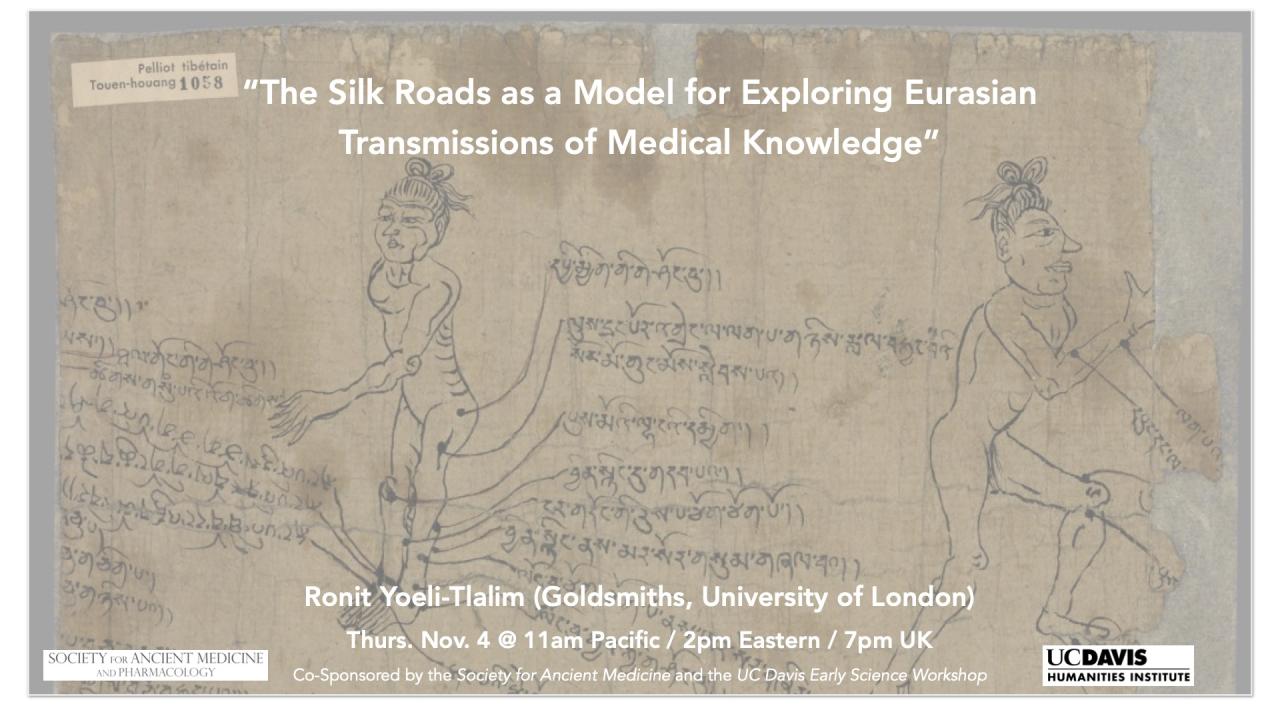
Event Date
"The Silk Roads as a Model for Exploring Eurasian Transmissions of Medical Knowledge"
Ronit Yoeli-Tlalim (Goldsmiths, University of London)
Thursday, Nov. 4 @ 11am Pacific / 2pm Eastern / 7pm UK
While the “Silk Road” as a concept was initially focused on its main termini points—China and Europe— thanks to the great archaeological discoveries along the Silk Roads of the twentieth century, we now know that its greater historical significance lies in fact in the great expanse in between. The manuscripts which were discovered in the early twentieth century in the so-called “Library Cave” of Dunhuang have only recently begun to be explored in European scholarship in the context of history of science and history of medicine. Observed in their overall context, the Dunhuang manuscripts are a bit like a time capsule, providing traces of what medicine was like ‘on the ground’, away from the main cultural centers at this particular geographical location. Being in manuscript form they preserve the benefits of unedited texts, revealing more diverse forms of healing, telling different stories than medical canons preserved in print. This paper begins with the Tibetan medical manuscripts from Dunhuang, dated to the from the 9th through 11th centuries CE, and proceeds to discuss them in the more general context of the multi-cultural interactions and exchanges of knowledge along the Silk Roads.
Register to receive the Zoom link here: https://ucdavis.zoom.us/meeting/register/tJIrfumurj8pHdKZXhN4lL3xjxo33Duh7eej
Closed captions will be provided.
For more information, please contact: Colin Webster (cwebster@ucdavis.edu)
Event sponsored by DHI Early Science Workshop and the Society for Ancient Medicine
